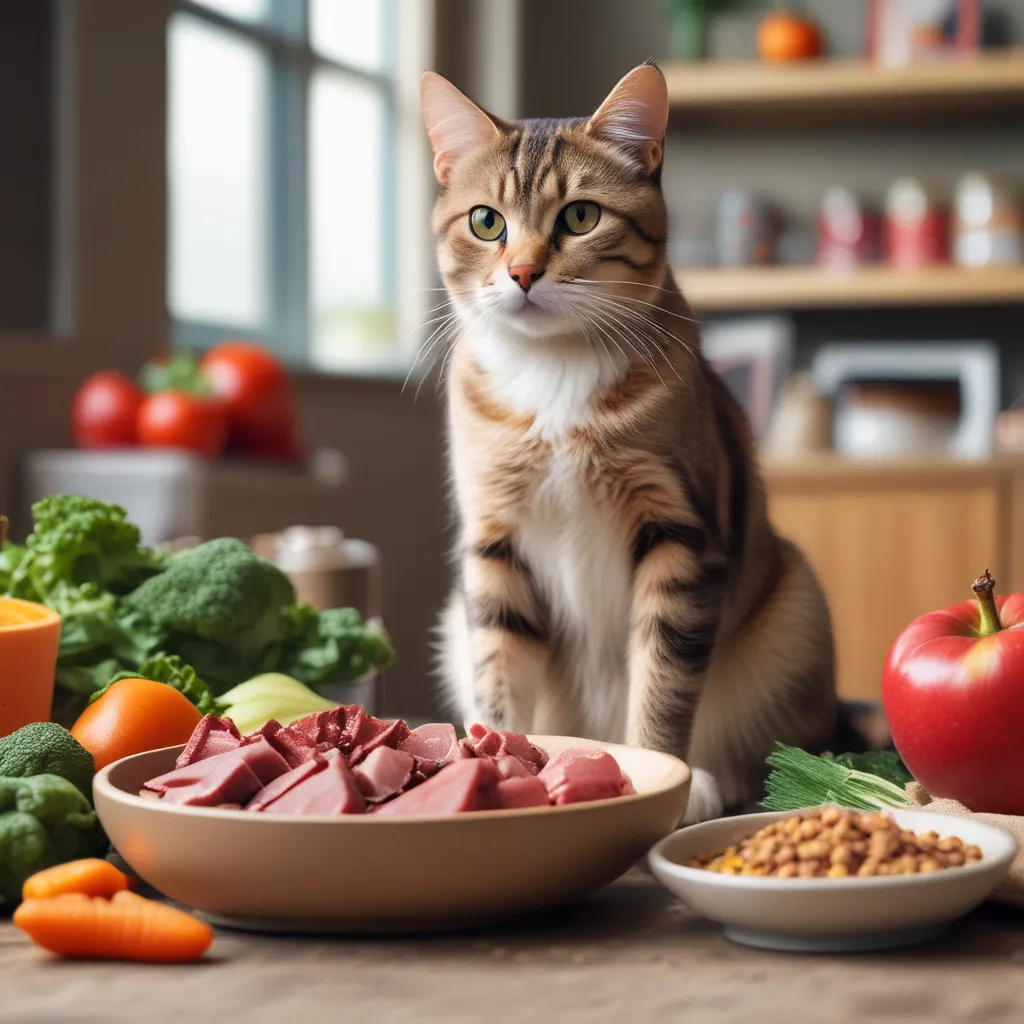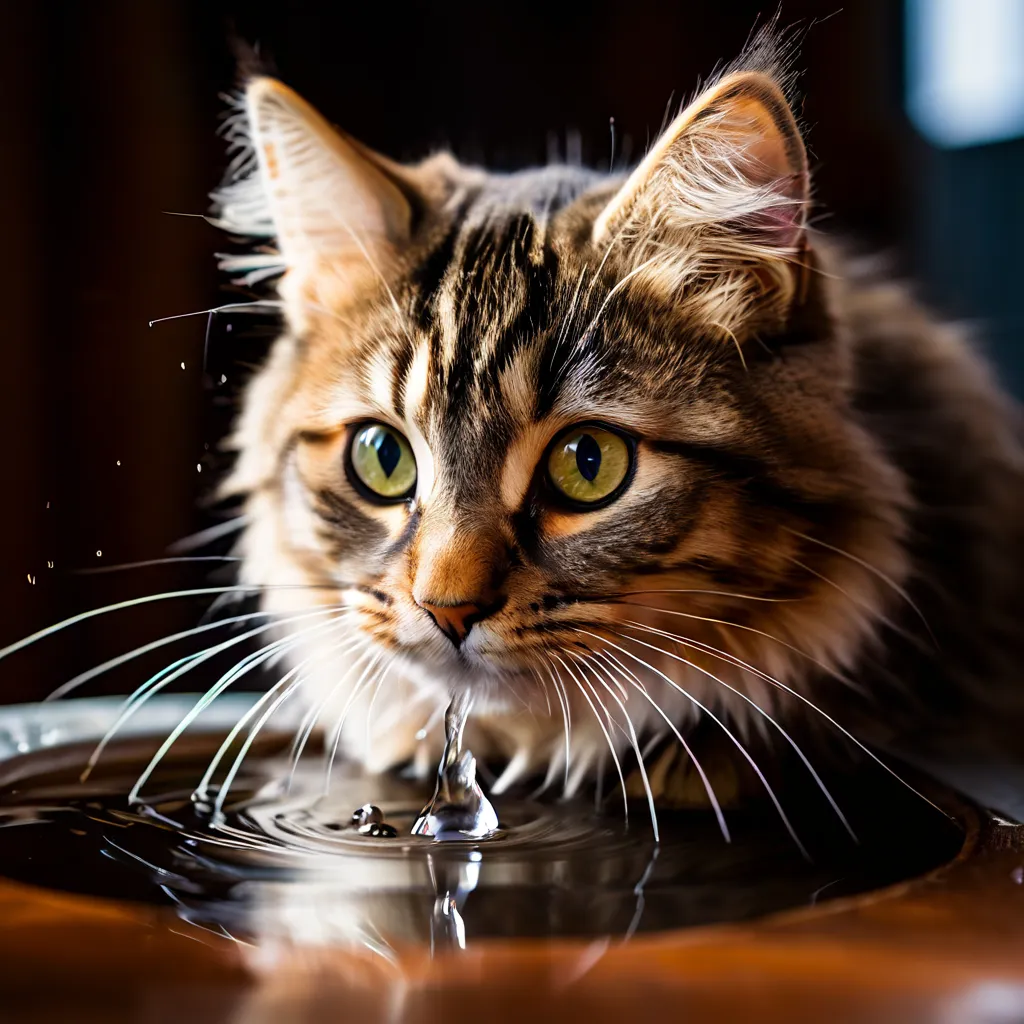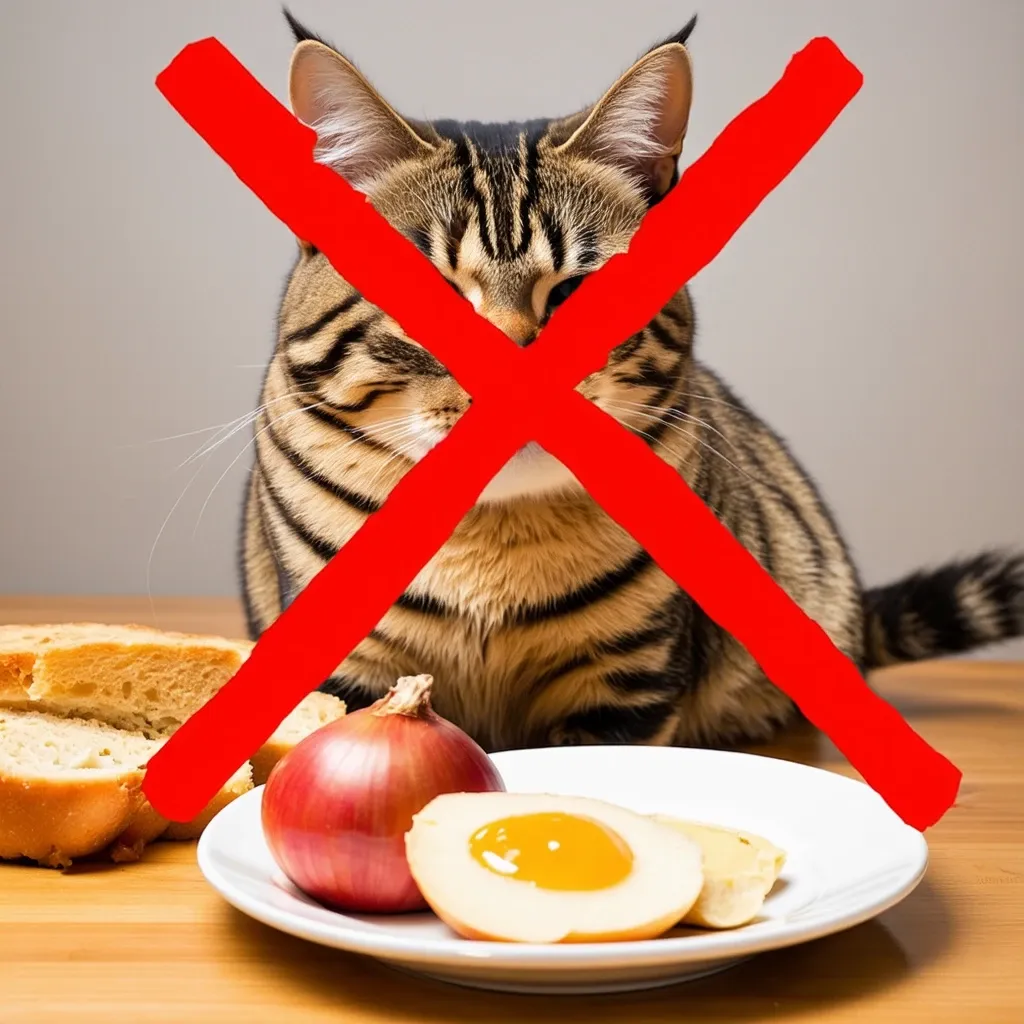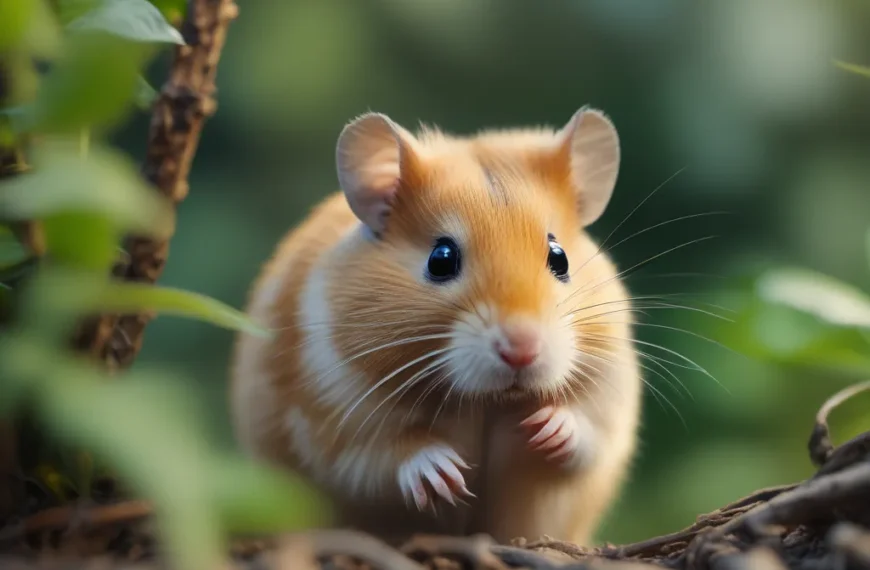Introduction
As a cat owner, you may have wondered if there are alternative food options for your feline friend beyond traditional cat food. With the rise of pet owners seeking more natural and holistic approaches to their pets’ diets, it’s essential to explore what cats can eat instead of cat food.

Cats are obligate carnivores, requiring a diet rich in protein and fat from animal sources. However, with the increasing awareness of the environmental impact of traditional cat food and the desire for more natural ingredients, many cat owners are seeking alternative options.
But what can cats eat instead of cat food? Can they thrive on a diet of fresh meat, fruits, and vegetables? In this article, we will delve into the world of alternative food options for cats, discussing the nutritional needs and requirements of our feline companions, the health considerations and risks associated with alternative food options, and the various alternatives available.
Understanding Cats’ Nutritional Needs and Requirements
Cats are obligate carnivores, which means they require a diet rich in protein from animal sources to stay healthy. Their nutritional needs are different from those of dogs and humans, and they have specific requirements for certain nutrients.
Macronutrients
- Protein: Cats require a minimum of 30% of their daily calories to come from protein. They need protein from animal sources, such as meat, fish, and poultry, to provide essential amino acids.
- Fat: Cats require a minimum of 20% of their daily calories to come from fat. They need fat from animal sources, such as meat and fish, to provide energy and essential fatty acids.
- Carbohydrates: Cats do not require a lot of carbohydrates in their diet. They can tolerate some carbohydrates, but high amounts can lead to obesity and other health problems.
Micronutrients
- Vitamins: Cats require vitamins A, D, E, K, and B vitamins, which are found in animal-based ingredients.
- Minerals: Cats require minerals such as calcium, phosphorus, magnesium, and potassium, which are found in animal-based ingredients.
Other Nutrients
- Taurine: Cats require taurine, an amino acid found in animal-based ingredients, to maintain heart health and vision.
- Arachidonic acid: Cats require arachidonic acid, an omega-6 fatty acid found in animal-based ingredients, to maintain skin and coat health.
Water
- Cats require access to fresh water at all times to stay hydrated.

Nutritional Requirements by Life Stage
- Kittens: Kittens require more protein and calories than adult cats to support growth and development.
- Adult cats: Adult cats require a balanced diet that meets their nutritional needs to maintain overall health.
- Senior cats: Senior cats may require fewer calories and more joint support to maintain mobility and overall health.
Common Nutritional Deficiencies
- Taurine deficiency: Taurine deficiency can lead to heart problems and vision loss.
- Vitamin A deficiency: Vitamin A deficiency can lead to skin problems and impaired immune function.
Understanding your cat’s nutritional needs and requirements is essential to providing a balanced and complete diet. Consult with your veterinarian to determine the best diet for your cat based on their life stage, health status, and lifestyle.
Health Considerations and Risks of Alternative Food Options
When considering alternative food options for your cat, it’s essential to be aware of the potential health risks and considerations involved. While some alternative diets may offer benefits, others can be detrimental to your cat’s health.
Nutritional Deficiencies
One of the primary concerns with alternative cat food is the risk of nutritional deficiencies. Cats require a specific balance of nutrients, including protein, fat, carbohydrates, vitamins, and minerals, to maintain optimal health. If an alternative diet is not well-balanced, it can lead to deficiencies, which can cause a range of health problems.
Food-Borne Illnesses
Raw or undercooked meat, eggs, and fish can contain bacteria like Salmonella and E. coli, which can be transmitted to cats and cause food-borne illnesses. This is particularly concerning for cats with weakened immune systems or those that are pregnant or nursing.
Increased Risk of Allergies
Some alternative diets, such as those containing beef or dairy, can increase the risk of allergies in cats. If your cat has a pre-existing allergy, introducing new ingredients can exacerbate the condition.
Potential for Increased Skin and Coat Health
On the other hand, some alternative diets, such as raw meat-based diets, may offer benefits for skin and coat health. Proponents of these diets claim that they can improve the overall health and appearance of a cat’s coat.
Digestibility and Fecal Output
Research has shown that raw meat-based diets can be more digestible than dry kibble diets, resulting in less food in the large intestine and less fecal output. This may be perceived as a benefit by some pet owners.
Key Considerations
When considering alternative food options for your cat, keep the following in mind:
- Consult with your veterinarian to determine the best diet for your cat’s specific needs and health status.
- Ensure that any alternative diet is well-balanced and meets your cat’s nutritional requirements.
- Handle raw meat, eggs, and fish safely to minimize the risk of food-borne illnesses.
- Monitor your cat’s health and adjust their diet accordingly.

Alternative Food Options for Cats
As a responsible cat owner, it’s essential to consider alternative food options for your feline friend. While commercial cat food is convenient and widely available, some cats may require or benefit from alternative diets. Here are some alternative food options for cats:
1. Raw or Cooked Meat
Cats are obligate carnivores, and feeding them raw or cooked meat can be a nutritious alternative to commercial cat food. However, it’s crucial to ensure that the meat is fresh, lean, and free of bones and seasonings. Some examples of raw or cooked meat that can be fed to cats include:
- Chicken
- Beef
- Fish (remove bones and skin)
- Turkey
- Lamb
2. Vegetables and Fruits
While cats don’t require a lot of fiber in their diet, some vegetables and fruits can be a healthy addition to their meals. However, it’s essential to introduce them in moderation and in small amounts to prevent digestive issues. Some examples of vegetables and fruits that can be fed to cats include:
- Cooked sweet potatoes
- Green beans
- Carrots
- Apples
- Blueberries
3. Eggs
Eggs are an excellent source of protein and can be a nutritious alternative to commercial cat food. However, it’s crucial to cook the eggs thoroughly to prevent the risk of salmonella.
4. Canned Tuna (in Water)
Canned tuna can be a convenient and affordable alternative to commercial cat food. However, it’s essential to choose tuna packed in water and avoid tuna packed in oil, as it can cause digestive issues.
5. Homemade Cat Food
Preparing homemade cat food can be a great way to ensure that your cat is getting the nutrients they need. However, it’s crucial to consult with a veterinarian or a qualified animal nutritionist to ensure that the diet is balanced and complete.

Remember to always consult with a veterinarian before making any changes to your cat’s diet. They can help you determine the best alternative food options for your cat based on their age, health, and nutritional needs.
Transitioning and Monitoring Cats on New Diets
Transitioning your cat to a new diet can be a challenging process, but with the right approach, it can be a successful and healthy experience for your feline friend. Here are some tips to help you transition and monitor your cat on a new diet:
Gradual Transition
When introducing a new diet, it’s essential to do it gradually to prevent digestive upset. Start by mixing a small amount of the new food with their current food and gradually increase the proportion of new food over 7-10 days. This will allow your cat’s digestive system to adjust to the new food.
Monitor Your Cat’s Health
Keep a close eye on your cat’s overall health during the transition period. Monitor their:
- Appetite: Make sure they are eating the new food and not showing any signs of decreased appetite.
- Stool quality: Check for any changes in stool quality, such as diarrhea or constipation.
- Vomiting: Watch for any signs of vomiting, such as regurgitation or lack of appetite.
- Energy levels: Monitor their energy levels and overall activity.
Tips for a Successful Transition
- Start with a small amount: Begin with a small amount of new food and gradually increase the proportion.
- Choose a similar texture: If your cat is used to eating dry food, try to introduce a new dry food that has a similar texture.
- Avoid mixing with other changes: Try to avoid introducing other changes, such as a new environment or new pets, during the transition period.
- Be patient: Transitioning to a new diet can take time, so be patient and don’t rush the process.
Common Health Risks to Monitor
- Food allergies or sensitivities: Monitor your cat for any signs of food allergies or sensitivities, such as itching, scratching, or digestive issues.
- Nutrient deficiencies: Make sure the new food provides all the necessary nutrients for your cat’s optimal health.
- Obesity: Monitor your cat’s weight and adjust the food amount accordingly to prevent obesity.
Transitioning your cat to a new diet requires patience, monitoring, and a gradual approach. By following these tips, you can ensure a successful transition and a healthy, happy cat.

Conclusion
In conclusion, exploring alternative food options for your feline friend can be a great way to provide them with a more varied and nutritious diet. However, it’s essential to remember that cats have specific nutritional needs that must be met in order to maintain their overall health and well-being.
As we’ve discussed throughout this article, understanding your cat’s nutritional needs and requirements is crucial when considering alternative food options. It’s also important to be aware of the potential health risks associated with certain foods and to transition your cat to new diets gradually.
By following these guidelines and consulting with your veterinarian, you can help ensure that your cat is receiving the nutrients they need to thrive. Remember, every cat is different, so it’s essential to monitor your cat’s health and adjust their diet accordingly.
















